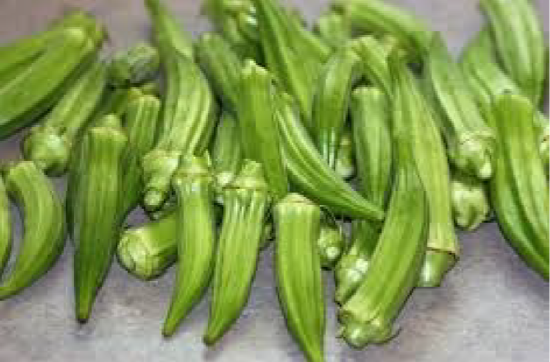3.8: Pods and Seeds
- Page ID
- 21426
\( \newcommand{\vecs}[1]{\overset { \scriptstyle \rightharpoonup} {\mathbf{#1}} } \)
\( \newcommand{\vecd}[1]{\overset{-\!-\!\rightharpoonup}{\vphantom{a}\smash {#1}}} \)
\( \newcommand{\id}{\mathrm{id}}\) \( \newcommand{\Span}{\mathrm{span}}\)
( \newcommand{\kernel}{\mathrm{null}\,}\) \( \newcommand{\range}{\mathrm{range}\,}\)
\( \newcommand{\RealPart}{\mathrm{Re}}\) \( \newcommand{\ImaginaryPart}{\mathrm{Im}}\)
\( \newcommand{\Argument}{\mathrm{Arg}}\) \( \newcommand{\norm}[1]{\| #1 \|}\)
\( \newcommand{\inner}[2]{\langle #1, #2 \rangle}\)
\( \newcommand{\Span}{\mathrm{span}}\)
\( \newcommand{\id}{\mathrm{id}}\)
\( \newcommand{\Span}{\mathrm{span}}\)
\( \newcommand{\kernel}{\mathrm{null}\,}\)
\( \newcommand{\range}{\mathrm{range}\,}\)
\( \newcommand{\RealPart}{\mathrm{Re}}\)
\( \newcommand{\ImaginaryPart}{\mathrm{Im}}\)
\( \newcommand{\Argument}{\mathrm{Arg}}\)
\( \newcommand{\norm}[1]{\| #1 \|}\)
\( \newcommand{\inner}[2]{\langle #1, #2 \rangle}\)
\( \newcommand{\Span}{\mathrm{span}}\) \( \newcommand{\AA}{\unicode[.8,0]{x212B}}\)
\( \newcommand{\vectorA}[1]{\vec{#1}} % arrow\)
\( \newcommand{\vectorAt}[1]{\vec{\text{#1}}} % arrow\)
\( \newcommand{\vectorB}[1]{\overset { \scriptstyle \rightharpoonup} {\mathbf{#1}} } \)
\( \newcommand{\vectorC}[1]{\textbf{#1}} \)
\( \newcommand{\vectorD}[1]{\overrightarrow{#1}} \)
\( \newcommand{\vectorDt}[1]{\overrightarrow{\text{#1}}} \)
\( \newcommand{\vectE}[1]{\overset{-\!-\!\rightharpoonup}{\vphantom{a}\smash{\mathbf {#1}}}} \)
\( \newcommand{\vecs}[1]{\overset { \scriptstyle \rightharpoonup} {\mathbf{#1}} } \)
\( \newcommand{\vecd}[1]{\overset{-\!-\!\rightharpoonup}{\vphantom{a}\smash {#1}}} \)
\(\newcommand{\avec}{\mathbf a}\) \(\newcommand{\bvec}{\mathbf b}\) \(\newcommand{\cvec}{\mathbf c}\) \(\newcommand{\dvec}{\mathbf d}\) \(\newcommand{\dtil}{\widetilde{\mathbf d}}\) \(\newcommand{\evec}{\mathbf e}\) \(\newcommand{\fvec}{\mathbf f}\) \(\newcommand{\nvec}{\mathbf n}\) \(\newcommand{\pvec}{\mathbf p}\) \(\newcommand{\qvec}{\mathbf q}\) \(\newcommand{\svec}{\mathbf s}\) \(\newcommand{\tvec}{\mathbf t}\) \(\newcommand{\uvec}{\mathbf u}\) \(\newcommand{\vvec}{\mathbf v}\) \(\newcommand{\wvec}{\mathbf w}\) \(\newcommand{\xvec}{\mathbf x}\) \(\newcommand{\yvec}{\mathbf y}\) \(\newcommand{\zvec}{\mathbf z}\) \(\newcommand{\rvec}{\mathbf r}\) \(\newcommand{\mvec}{\mathbf m}\) \(\newcommand{\zerovec}{\mathbf 0}\) \(\newcommand{\onevec}{\mathbf 1}\) \(\newcommand{\real}{\mathbb R}\) \(\newcommand{\twovec}[2]{\left[\begin{array}{r}#1 \\ #2 \end{array}\right]}\) \(\newcommand{\ctwovec}[2]{\left[\begin{array}{c}#1 \\ #2 \end{array}\right]}\) \(\newcommand{\threevec}[3]{\left[\begin{array}{r}#1 \\ #2 \\ #3 \end{array}\right]}\) \(\newcommand{\cthreevec}[3]{\left[\begin{array}{c}#1 \\ #2 \\ #3 \end{array}\right]}\) \(\newcommand{\fourvec}[4]{\left[\begin{array}{r}#1 \\ #2 \\ #3 \\ #4 \end{array}\right]}\) \(\newcommand{\cfourvec}[4]{\left[\begin{array}{c}#1 \\ #2 \\ #3 \\ #4 \end{array}\right]}\) \(\newcommand{\fivevec}[5]{\left[\begin{array}{r}#1 \\ #2 \\ #3 \\ #4 \\ #5 \\ \end{array}\right]}\) \(\newcommand{\cfivevec}[5]{\left[\begin{array}{c}#1 \\ #2 \\ #3 \\ #4 \\ #5 \\ \end{array}\right]}\) \(\newcommand{\mattwo}[4]{\left[\begin{array}{rr}#1 \amp #2 \\ #3 \amp #4 \\ \end{array}\right]}\) \(\newcommand{\laspan}[1]{\text{Span}\{#1\}}\) \(\newcommand{\bcal}{\cal B}\) \(\newcommand{\ccal}{\cal C}\) \(\newcommand{\scal}{\cal S}\) \(\newcommand{\wcal}{\cal W}\) \(\newcommand{\ecal}{\cal E}\) \(\newcommand{\coords}[2]{\left\{#1\right\}_{#2}}\) \(\newcommand{\gray}[1]{\color{gray}{#1}}\) \(\newcommand{\lgray}[1]{\color{lightgray}{#1}}\) \(\newcommand{\rank}{\operatorname{rank}}\) \(\newcommand{\row}{\text{Row}}\) \(\newcommand{\col}{\text{Col}}\) \(\renewcommand{\row}{\text{Row}}\) \(\newcommand{\nul}{\text{Nul}}\) \(\newcommand{\var}{\text{Var}}\) \(\newcommand{\corr}{\text{corr}}\) \(\newcommand{\len}[1]{\left|#1\right|}\) \(\newcommand{\bbar}{\overline{\bvec}}\) \(\newcommand{\bhat}{\widehat{\bvec}}\) \(\newcommand{\bperp}{\bvec^\perp}\) \(\newcommand{\xhat}{\widehat{\xvec}}\) \(\newcommand{\vhat}{\widehat{\vvec}}\) \(\newcommand{\uhat}{\widehat{\uvec}}\) \(\newcommand{\what}{\widehat{\wvec}}\) \(\newcommand{\Sighat}{\widehat{\Sigma}}\) \(\newcommand{\lt}{<}\) \(\newcommand{\gt}{>}\) \(\newcommand{\amp}{&}\) \(\definecolor{fillinmathshade}{gray}{0.9}\)Pod and seed vegetables include corn, legumes and okra. They are grouped together here because the parts consumed are all the seeds of their respective plants. In some cases, only the seeds are eaten; in others, the pod containing the seeds are eaten as well. Seeds are generally higher in protein and carbohydrates (starch and fiber) than other vegetables.
Corn
Sweet corn is actually a grain, a type of grass. Corn kernels, like peas, are plant seeds. (Dried corn products are discussed in Chapter 23, Potatoes, Grains and Pasta.) The kernels, which may be white or yellow, are attached to a woody, inedible cob. The cob is encased by strands of hair-like fibers called silks and covered in layers of thin leaves called husks. Shuck the ears (remove the silks and husks) prior to cooking; the husks may be left on for roasting or grilling. Shucked ears can be grille d, boiled, microwaved or steamed. The kernels can be cut off the cob before or after cooking. Corn on the cob is available fresh or frozen; corn kernels are available canned or frozen.
- Select freshly picked ears with firm, small kernels. Avoid those with mold or decay at the tip of the cob or brownish silks. Summer is the peak season for fresh corn.
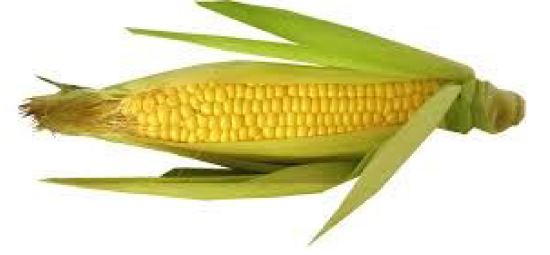
Legumes
Beans and peas are members of the legume family, a large group of vegetables with double-seamed pods containing a single row of seeds. Of the hundreds of known varieties of beans, some are used for their edible pods, others for shelling fresh and some only for their dried seeds. Dried beans are actually several varieties of seeds or peas left in the pod until mature, then shelled and dried.
Fresh Beans
Beans used for their edible pods, commonly referred to as green beans, string beans, runner beans or snap beans, are picked when immature. Except for the stem, the entire pod can be eaten. This category includes the American green bean, the yellow wax bean and the French haricot vert, a long, slender pod with an intense flavor and tender texture. Any strings along the pod's seams should be pulled off before cooking. Beans may be left whole, cut lengthwise into thin slivers (referred to as French cut), or cut crosswise on the diagonal.
Shelling beans are those grown primarily for the edible seeds inside the pod. Common examples are flageolets, lima beans and fava (broad) beans. Their tough pods are not usually eaten.
All beans can be prepared by steaming, microwaving or sautéing. They can be added to soups or stews, and they blend well with a variety of flavors, from coconut milk to garlic and olive oil. Cooked beans can be chilled and served as a salad or erudite.
- Select beans that have a bright color without brown or soft spots. Large pods may be tough or bitter. The peak season for fresh beans is from April through December. Most bean varieties are available frozen or canned, including pickled and seasoned products.
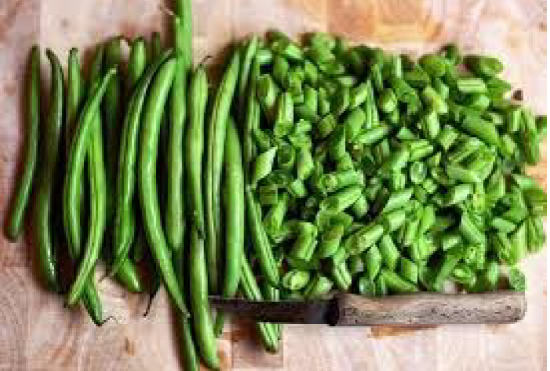
Dried Beans
Anthropologists report that for thousands of years, cultures worldwide have preserved some members of the legume family by drying. Common dried beans include kidney beans, pinto beans, chickpeas, lentils, black beans, black-eyed peas and split green peas. Shape is the clearest distinction among these products: Beans are oval or kidney-shaped; lentils are small, flat disks and peas are round.
Beans and peas destined for drying are left on the vine until they are fully matured and just beginning to dry. They are then harvested, shelled, and quickly dried with warm air currents. Some dried legumes are sold split, which means the skin is removed, causing the seed's two halves to separate. Most dried beans need to be soaked in water before cooking. Soaking softens and rehydrates the beans, thus reducing cooking time. Lentils and split peas generally do not require soaking, however, and will cook faster than beans. After soaking, beans are most often simmered or baked in a liquid until soft and tender. One type maybe substituted for another in most recipes, although variations in color, starch content, and flavor should receive consideration.
Dried beans and peas are available in bulk or in 1-pound (450-gram) poly-bags. They should be stored in a cool, dry place, but not refrigerated. Many of these beans are also available fully cooked, then canned or frozen. Some dried beans may be fermented or processed into flour, oil or bean curd.
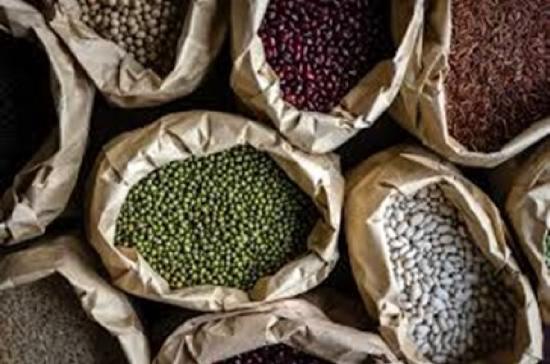
Shelling Peas
Of the shelling peas that are prepared fresh, the most common are green garden peas (English peas) and the French petit pois. Because they lose flavor rapidly after harvest, most shelling peas are sold frozen or canned. Shelling peas have a delicate, sweet flavor best presented by simply steaming until tender but still al dente. Peas may also be braised with rich meats such as ham, or used in soups. Cooked peas are attractive in salads or as garnish.
Choose small fresh pea pods that are plump and moist. Peak season is April and May. Fresh green soy beans (soya) (Japanese: edamame) are becoming a popular shelling pea in the United States. When picked before maturity, soybeans have a light green, fuzzy pod and a tender, sweet pea. Fresh green soybeans are delicious steamed in the pod, then chilled, popped open and eaten out of hand as a snack. Often served in sushi restaurants or with other Asian cuisines, they are extremely high in protein, fiber and phytochemicals. When allowed to mature and then prepared like other dried beans, however, soybeans become extremely tough, hard to digest and bitter. Mature soybeans are best used for processing into oil, tofu, sauce and other foodstuffs.
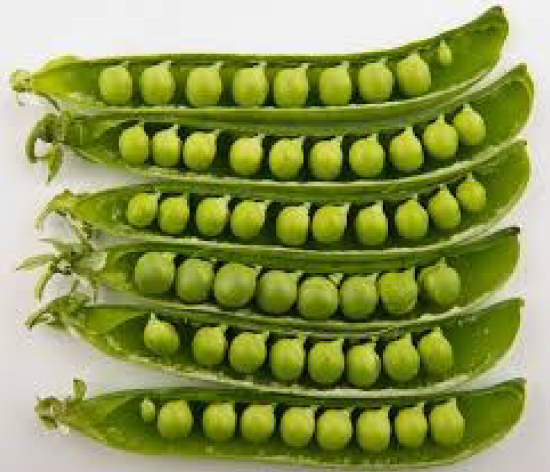
Edible Pea Pods
Snow peas, also known as Chinese pea pods, are a common variety of edible pea pod. They are flat and have only a few very small green peas. Snow peas have a string along their seams that can be removed by holding the leafy stem and pulling from end to end. The pods can be eaten raw, lightly blanched or steamed, or stir-fried.
Another variety of edible pea pod is the sugar snap pea, a cross between the garden pea and snow pea, which was developed during the late 1970s. They are plump, juicy pods filled with small, tender peas. The entire pod is eaten; do not shell the peas before cooking.
- Select pea pods that are firm, bright green and crisp. Avoid those with brown spots or a shriveled appearance. Pea pods are available all year; their peak season is in March and April.
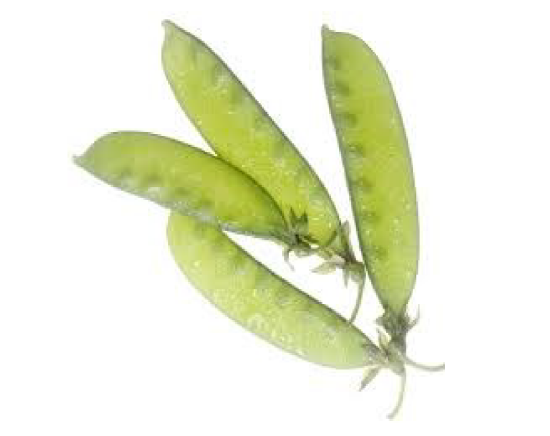
Okra
Okra, a common ingredient in African and Arab cuisines, was brought to the United States by slaves and French settlers . It is now integral to Creole, Cajun, southern and southwestern cuisines. Its mild flavor is similar to that of asparagus. Okra is not eaten raw; it is best pickled, boiled, steamed or deep-fried. Okra develops a gelatinous texture when cooked for long periods, so it is used to thicken gumbos and stews. To avoid the slimy texture some find objectionable , do not wash okra until ready to cook, then trim the stem end only. Cook okra in stainless steel because other metals cause discoloration.
- Select small to medium pods (11 / 2 to 2 inches [3.75 to 5 centimeters]) that are deep green, without soft spots. Pale spears with stiff tips tend to be tough. Okra's peak season is from June through September. Frozen okra is widely available.
